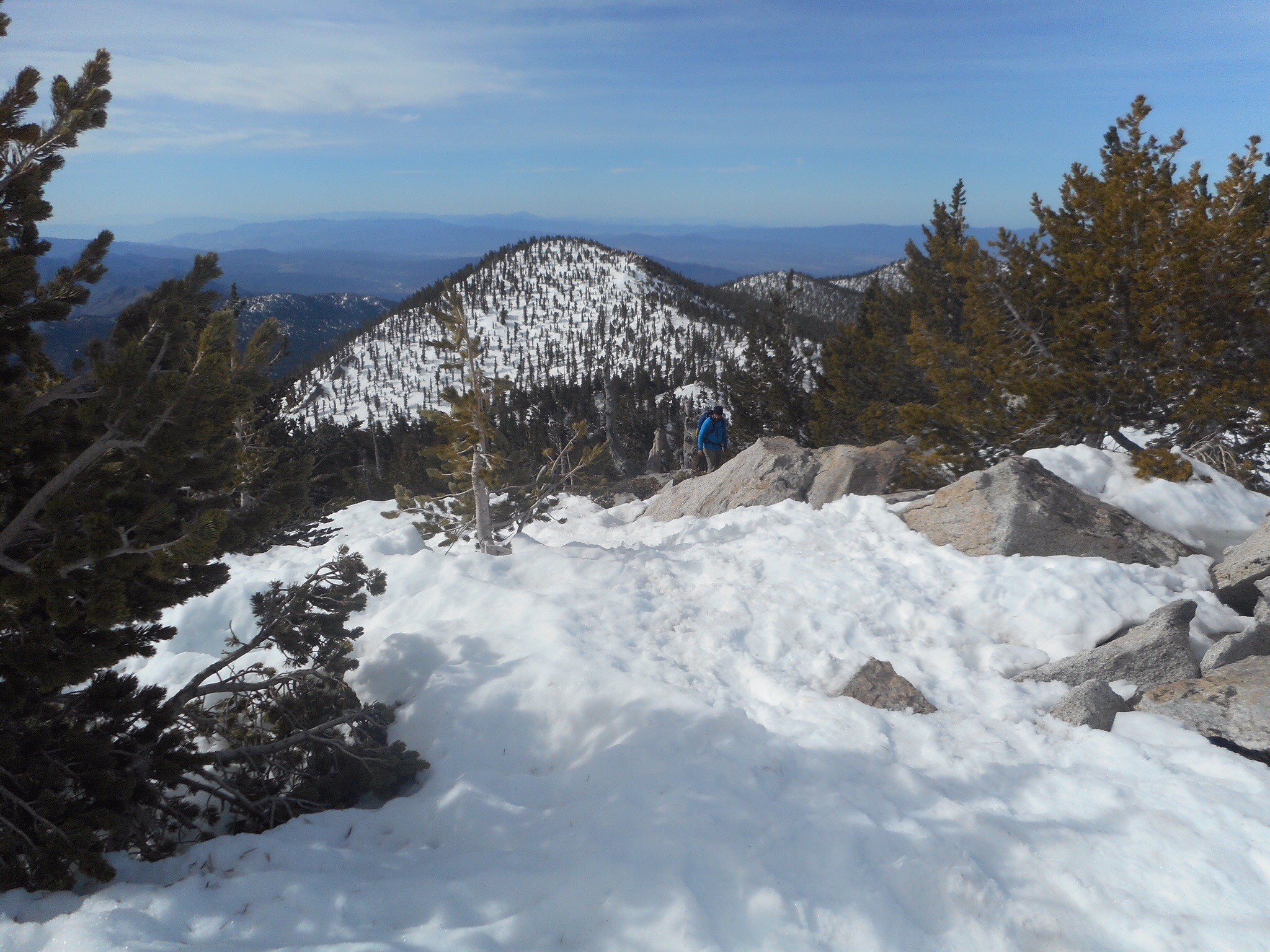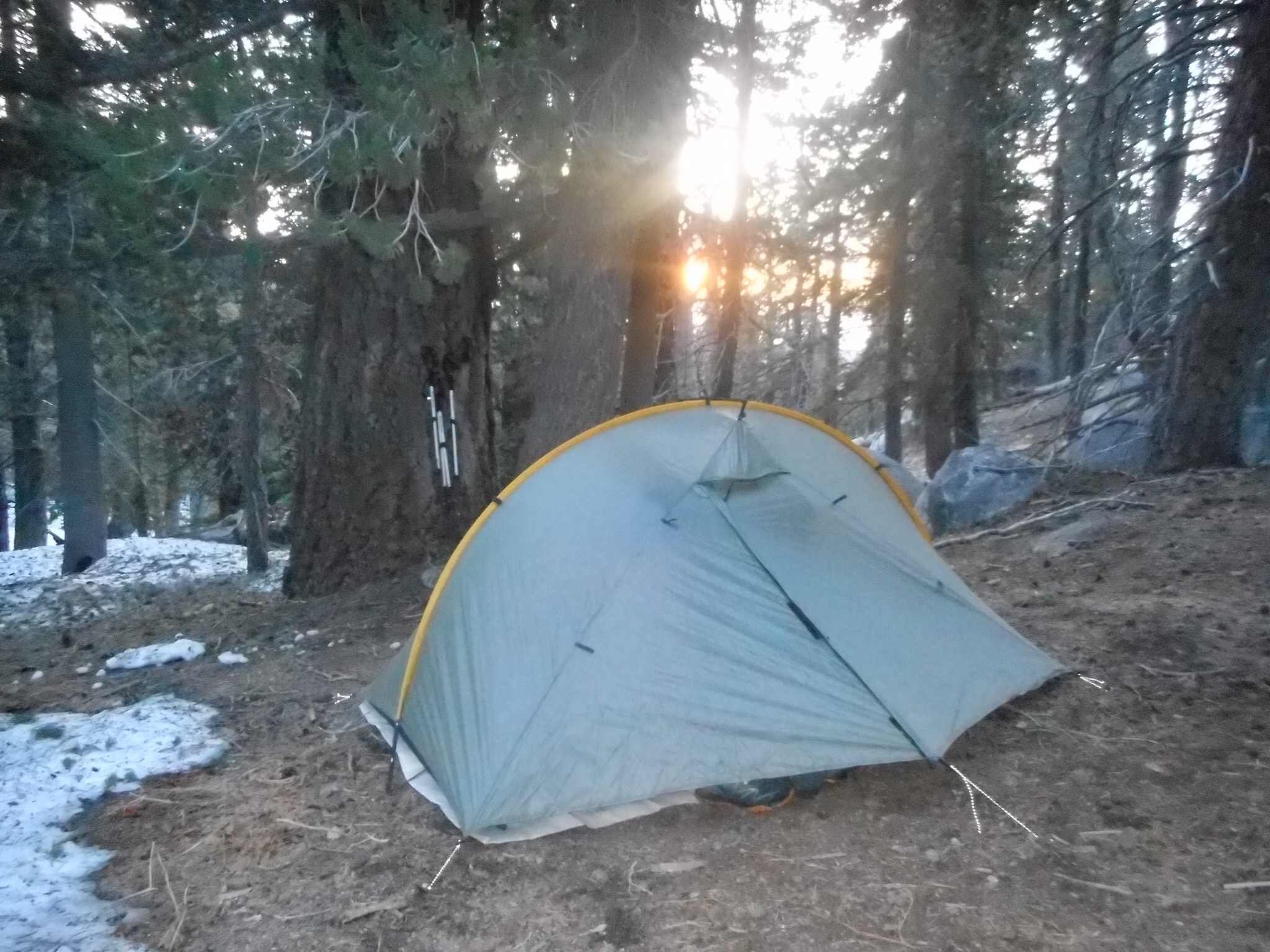We Summited Mt. San Jacinto!
A quick caveat to any readers using this as a guide for their summit attempt of Mt. San Jacinto; we completed our summit on the morning of April 26 and conditions are changing rapidly.
For north-bounders Mt. San Jacinto is the first of the optional summits easily accessible from the PCT. At 10,834 feet, it serves as an excellent training ground for the major peaks coming your way further along on the trail. It’s also an excellent opportunity to test your snow skills in advance of the Sierra section. Personally, despite having hiked to higher altitudes in the past, I found that the early season conditions made this summit a challenge, albeit a very doable one.
The Set Up
Our small band of hikers left Idyllwild the afternoon before, and with full stomachs and rested legs, started up Deer Creek Trail (warning: lots of switchbacks) before meeting back up with the PCT. The change in conditions from the desert we’d been hiking in previously was immediately obvious. Big trees, pine cones, and cooler temperatures abounded. We set up camp a couple of miles past the junction, leaving approximately 4 miles for the final push in the morning. Snow was already plentiful at this level, but there were enough bare patches to camp comfortably.
We woke up the next morning at 6:00, which is quite the sleep in for our group which normally favours a 4:30 start. We wanted to start a bit later to avoid covering tricky patches in the dark, but early enough so that we were dealing with solid snow packs, not mushy snow. Leaving our tents and most of our equipment behind, we packed just snacks and water and started up the trail. Within about a mile the trail was no longer visible, so we put on our microspikes and made our own route, made challenging by lots of boulders and large deadfall. We asked the Swiss Engineer of our group if he could kindly build us a tunnel to the top, but he declined. As long as we avoided tree well and the edges of other obstacles the snow was reasonably stable, and I only had one major post hole, but it was up to my waist. We all reached the summit safely, celebrated with small bottles of sangria, and started back down.

The Descent
The snow was already visibly softer on the way down, and as a result we were sinking a little in spots. I can only imagine how much more difficult the ascent would have been if we had been starting at this time. We made it back to our camp, tired and hungry, so we stopped and had lunch before packing up and heading out. By the time we hiked out past Fuller Ridge, all signs of the altitude forest we had been in that morning were wiped clean and we were back in the desert.
Tips and Tricks
- We all used microspikes and trekking poles, and, for the conditions we were in, this felt appropriate.
- All hikers should stay a minimum of one body length distance back of each other (minimize the domino effect if a slip occurs) with only one hiker on each snow pack at a time.
- Check the sturdiness of any snow bridges with your pole before stepping onto it.
- If you’re climbing up a snow pack, make a forward kicking motion with each step to make little indents/steps into the snowpack with your toes.
This website contains affiliate links, which means The Trek may receive a percentage of any product or service you purchase using the links in the articles or advertisements. The buyer pays the same price as they would otherwise, and your purchase helps to support The Trek's ongoing goal to serve you quality backpacking advice and information. Thanks for your support!
To learn more, please visit the About This Site page.





Comments 2
Hi Lisa! Quick Q, How are you liking your Double Rainbow Tarptent? I kind of want the double rainbow, is it having condensation issues? I’m enjoying your posts! Thanks
Jeff
Hi Jeff! Glad you are enjoying my posts! So far I’ve really been enjoying the Double Rainbow; I think it offers one of the best cost/weight/interior space ratios on the market. We can both easily sit up in it at the same time, and that was a big deal for me and it’s really fast to set up and take down.
Condensation does happen, but I’ve found it to be manageable so far. Most nights we sleep with the side vestibules either fully rolled up or pegged down but half open; in these cases there is no condensation. When we have to close the vestibule doors due to bad weather, condensation does occur, but I haven’t found it overly bad. We just then unzip the vestibules in the morning to allow some airflow, waft it after we take it down, and it dries out nicely. My main concern is how it handles back to back days of rain when it doesn’t have a chance to dry out, but we’ll have to wait and see on that. Any single wall, silnylon tent is likely going to have some challenges with sagging in these conditions…